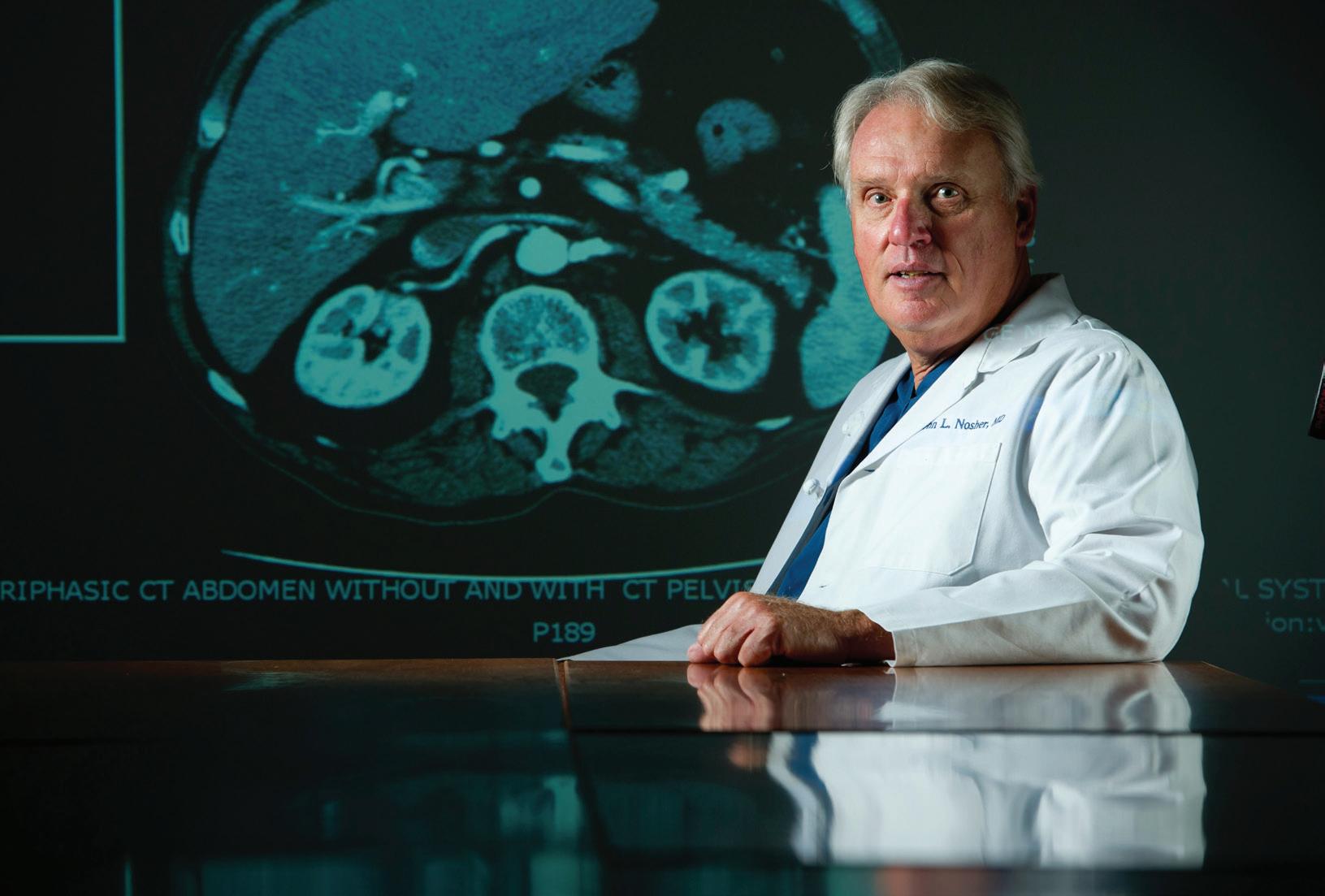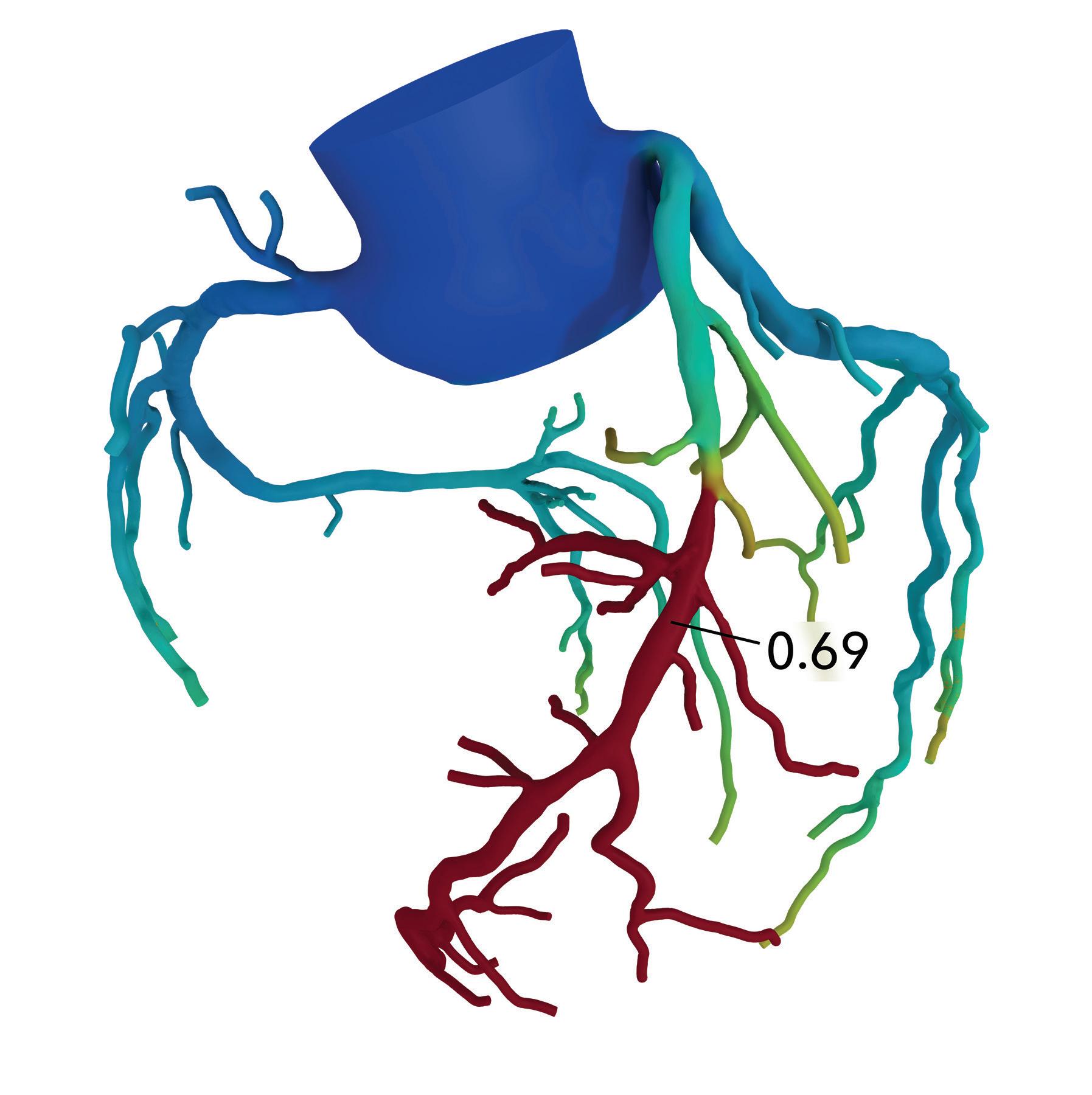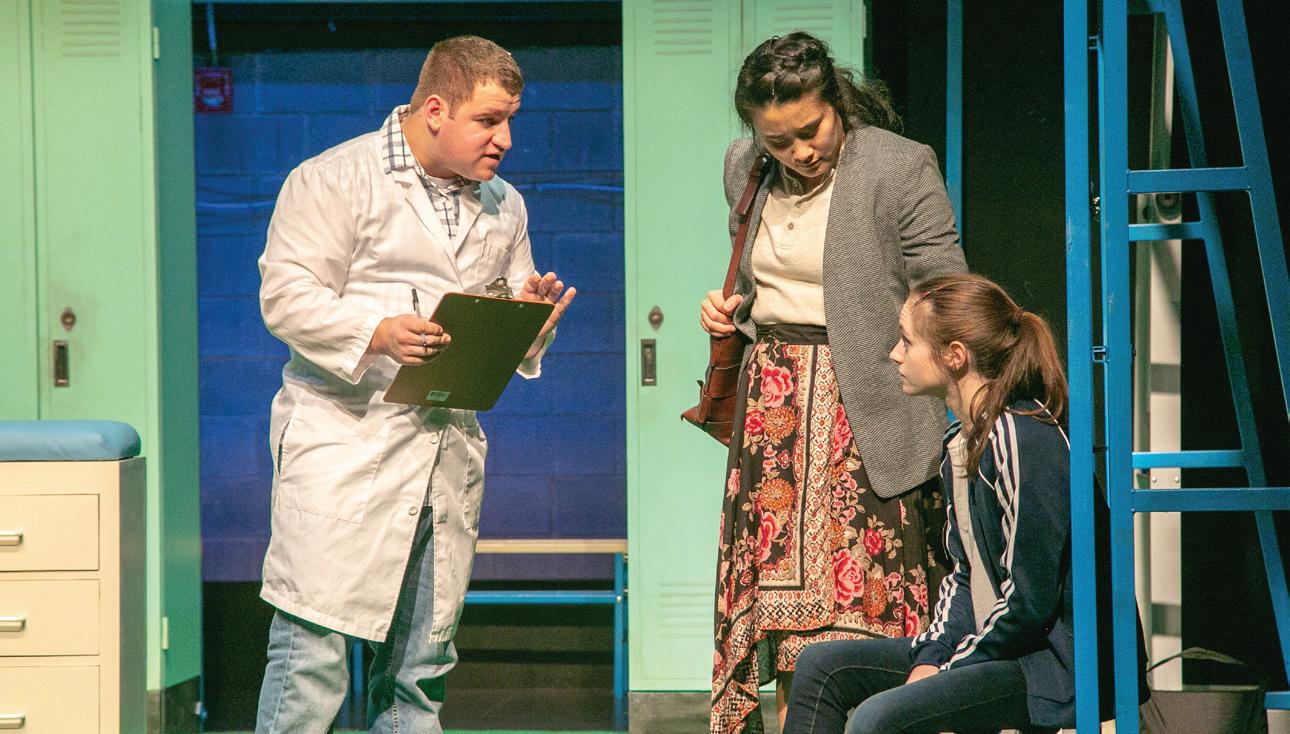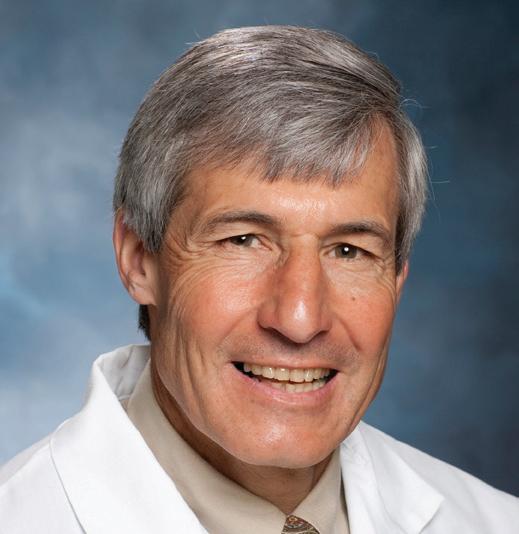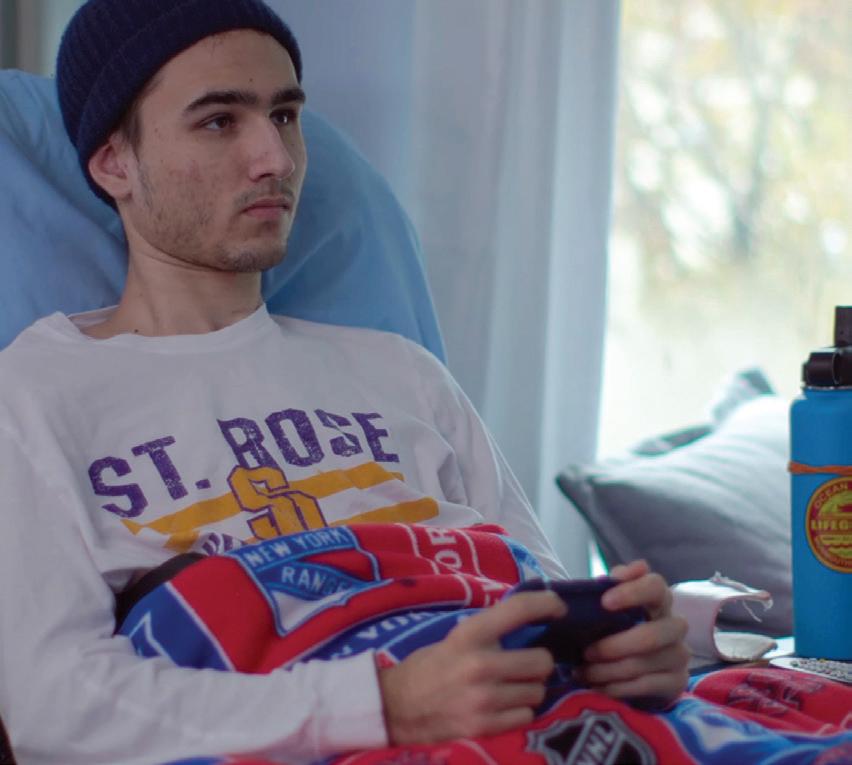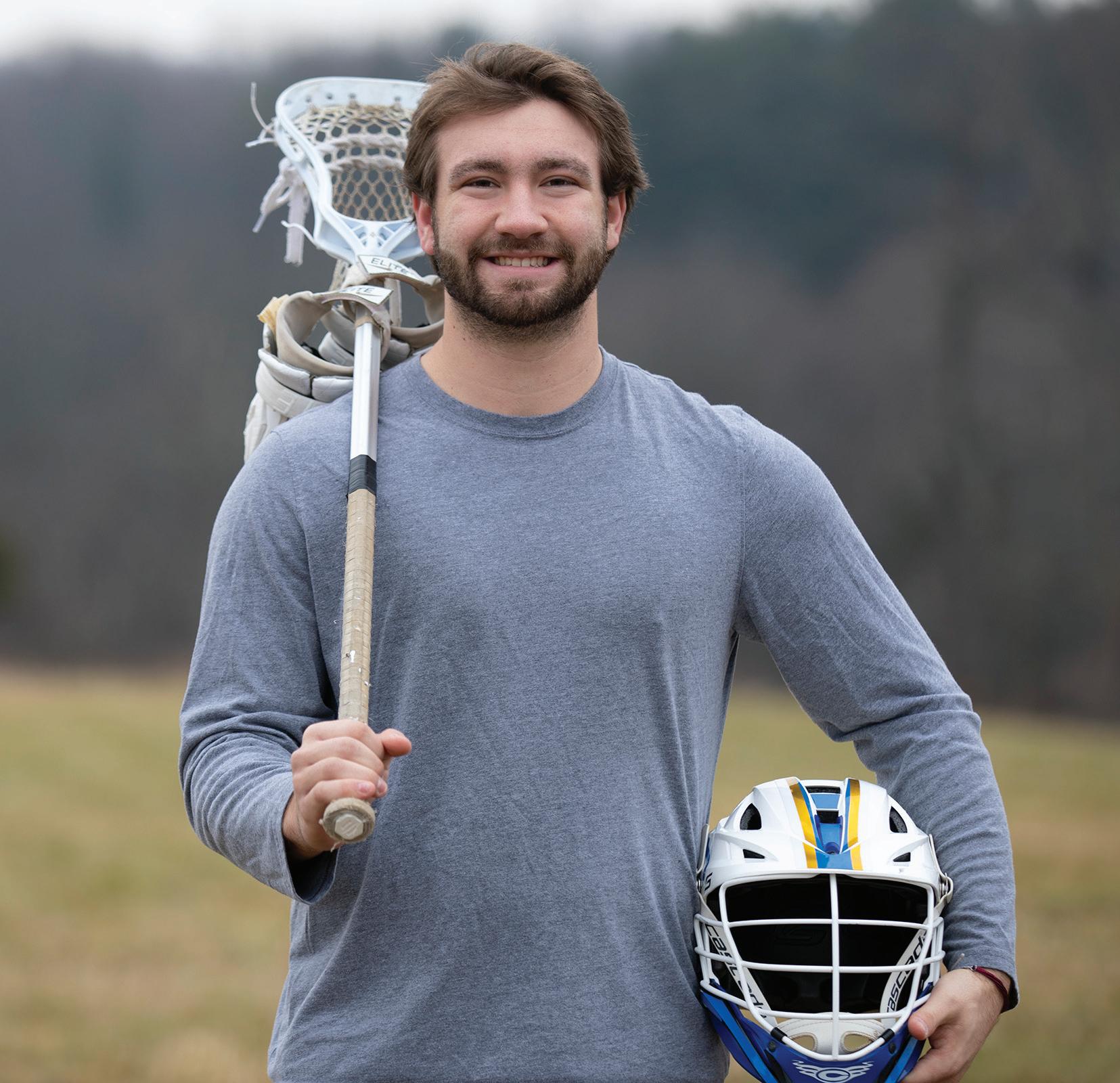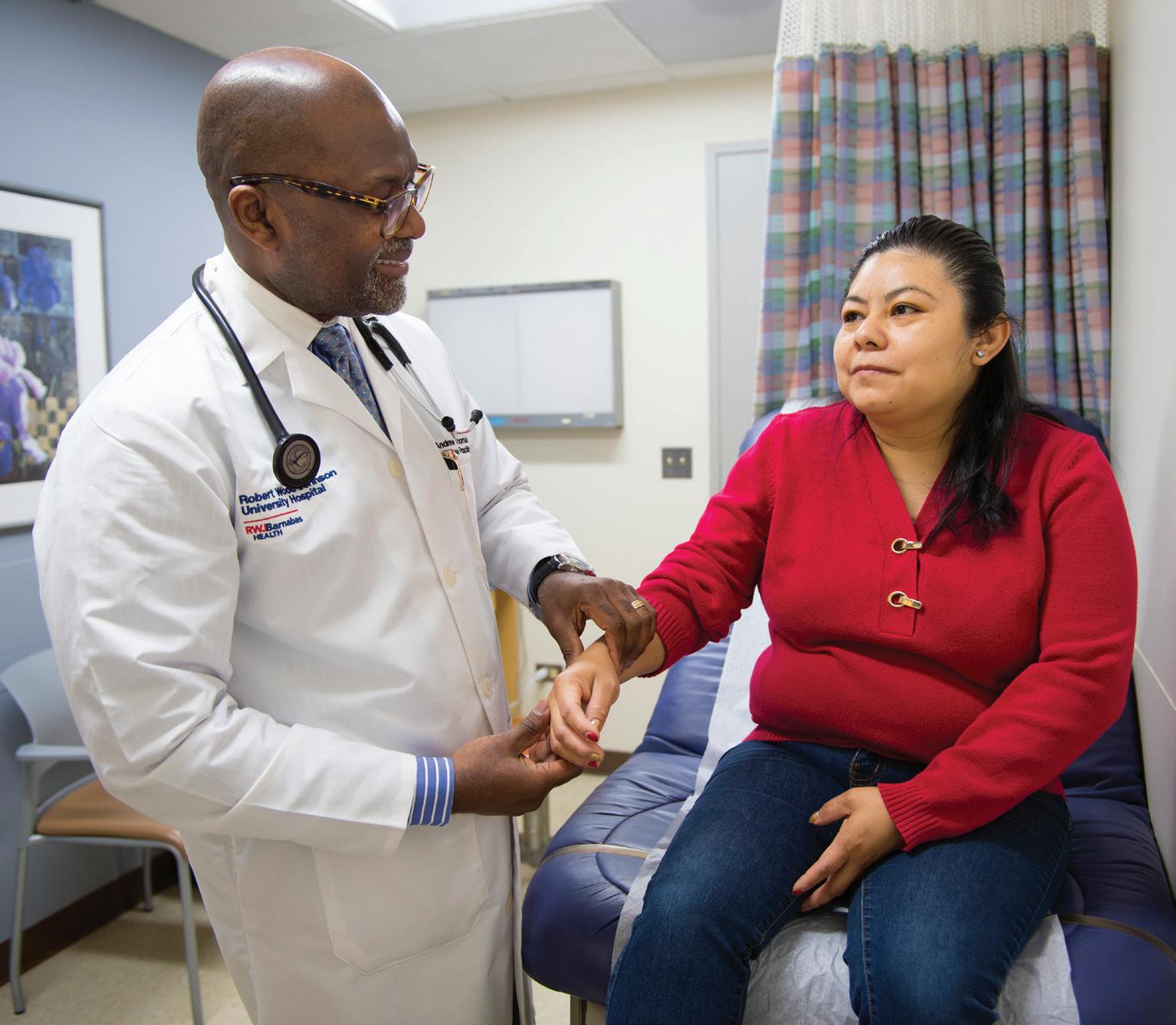
4 minute read
A TEAM EFFORT. A
A multidisciplinary medical team at Robert Wood Johnson University Hospital provided expert care for Dorothea Berkhout.
A TEAM EFFORT


THANKS TO THE EXPERTISE AND DEDICATION OF SEVERAL SPECIALISTS, A PATIENT RECOVERED FROM A DANGEROUS INFECTION.
Flu season was in full force, so when Dorothea Berkhout began experiencing chills and a high fever in January 2018, she initially assumed she was just one of the latest victims. Two weeks later, the Associate Dean at the Edward J. Bloustein School of Planning & Public Policy at Rutgers University began to feel worse, not better. She saw her primary care physician, who ordered a chest X-ray and routine blood tests to look for signs of infection. When the X-ray revealed fl uid in her chest and the bloodwork showed liver abnormalities, her physician sent her to the Emergency Department (ED) at Robert Wood Johnson University Hospital (RWJUH).
Th ea arrived on a Friday evening. Th e ED team sprang into action and diagnosed her with multiple liver abscesses, masses
filled with pus that can be life-threatening. The abscesses had grown so large they were pushing against one of her lungs, causing fluid to develop there as well. The next day, a team of RWJUH and Rutgers Robert Wood Johnson Medical School specialists discussed Thea’s condition, including infectious disease expert Tanaya Bhowmick, MD; liver cancer specialist Miral Sadaria Grandhi, MD; and interventional radiologist John L. Nosher, MD. “The most common cause of a liver abscess is a bacterial infection—typically one caused by a group of bacteria known as Streptococcus,” says Dr. Bhowmick.
Worried that the abscesses would burst, causing the bacteria to spread throughout Thea’s body, interventional radiologist John L. Nosher, MD, received Leonard Bodner, MD, inserted a drain—a the 2019 Harvey A. Holzberg thin catheter—into her liver to remove the Leadership Award for the role he’s pus. In addition, interventional radiologist played in advancing the field of interventional radiology. Michael Censullo, MD, removed fluid from her lungs, which was caused by pressure from her liver. But it wasn’t until Monday that the team discovered the source of the infection—a bacterium “I left the hospital and went straight to an important budget known as Streptococcus intermedius, which is typically found in meeting with the Rutgers chancellor,” she recalls. the mouth or gastrointestinal tract.
The RWJUH team prescribed antibiotics, and multiple A GRATEFUL PATIENT catheters removed fluid from Thea’s body. Yet her recovery was In May 2018, Thea was pronounced infection-free. “I’m so grateful grueling. “I lost 10 pounds in the two weeks I was in the hospital that I didn’t have surgery, which would have been riskier,” because I had no appetite,” she recalls. “I had to be put on a she says. Although she’d never been treated as an inpatient at feeding tube for a week.” Even after she was discharged, Thea RWJUH, she raves about the care she received. “Everyone on staff, had to return to the hospital weekly over the next five weeks so especially the nurses, was great, and I will never forget that the her physicians could ensure that the pus was still draining from head of dining services came to see me to find out what he could the abscesses. make that would get me to eat,” she recalls. (She didn’t have an A MAJOR MEDICAL DECISION Thea is also grateful for her physicians. “Dr. Nosher always In March, Thea landed in the hospital again. Although the made an effort to explain what was going on so that I felt abscesses had partially cleared, they had consolidated into one involved in every step of the process,” says Thea, whose father large area. The abscess had become reinfected with a difficultwas a general practitioner in Paterson. (Thea has always held to-treat bacterium (methicillin-resistant Staphylococcus aureus, physicians in high regard.) “My husband used to joke that every also known as MRSA), and she’d stopped responding to the morning there was a ‘flock of doctors’ in my hospital room, but antibiotics. Once again, the abscess was pushing against one we both felt relieved that so many different disciplines—the of her lungs, causing fluid to build up. Her medical team had infectious disease team, the radiology team and the surgical to make a major decision: try a different antibiotic or perform team—were involved in my care. I was especially impressed that surgery to remove the diseased part of her liver. “We had to weigh they brought in Dr. Grandhi, a liver cancer specialist who was the magnitude of the infection against the risk of complications there to consult about a possible biopsy and surgery. I felt like we from major liver surgery,” says Dr. Nosher. were all in it together.” Ultimately, the team decided to It’s a mentality, says Dr. Nosher, that’s unique to RWJUH. switch Thea to vancomycin, one of the “Every decision we make is informed by feedback from our entire few antibiotics effective against MRSA. team,” he says. “Even if we’re not physically present in the hospital, “Vancomycin can only be administered someone from each specialty is on call 24/7 to provide insight,” he intravenously when it comes to liver says. “Thea’s case was complicated, and I don’t think she would have infections, and I was adamant that I wasn’t recovered—and had such a successful outcome—without it.” going home with a port,” says Thea. She remained in the hospital for five days. appetite, but he made extra meals for her husband.) After she was discharged, Dr. Bhowmick To learn more about Robert Wood Johnson University put Thea on another powerful antibiotic— Hospital, visit www.rwjbh.org/newbrunswick. TANAYA BHOWMICK, MD Linezolid—and Thea returned to work.
